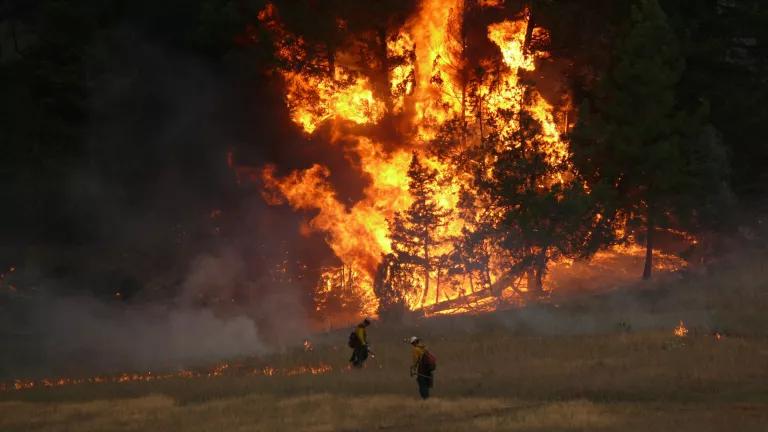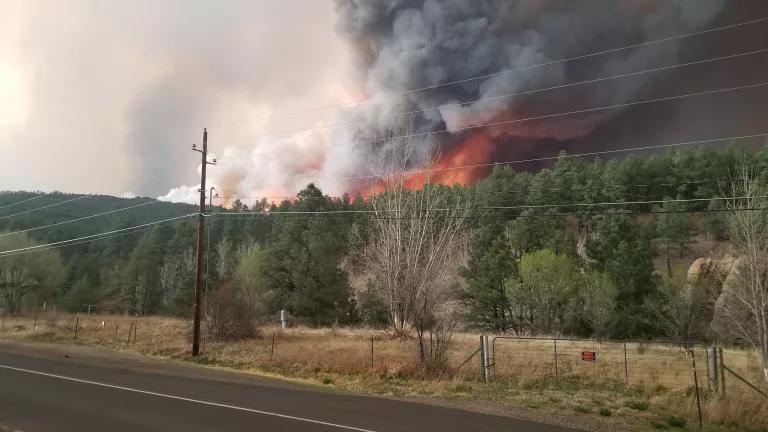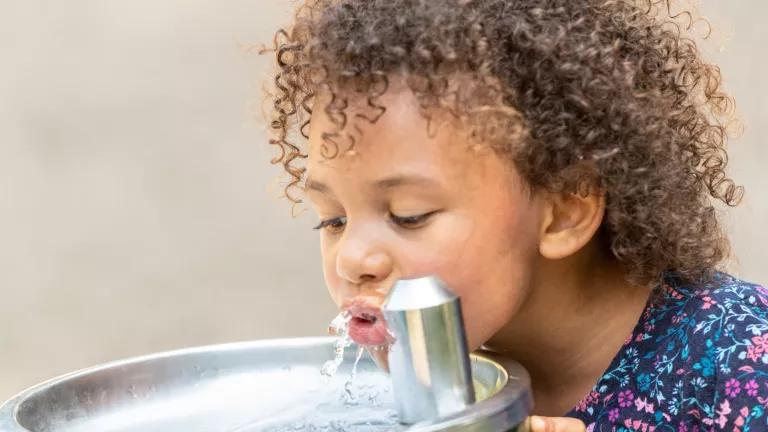2021 New Mexico Wildfires: When, Why, and How to Stay Safe
More frequent and intense wildfires in New Mexico are a clear sign that the climate crisis is here. Keep reading to learn more about how climate change is fueling stronger wildfires across New Mexico, what you can do to keep yourself and others safe and healthy, and what your elected officials can do to ensure a livable state for today’s residents and generations to come.

A prescribed burn
More frequent and intense wildfires in New Mexico are a clear sign that the climate crisis is here. Keep reading to learn more about how climate change is fueling stronger wildfires across New Mexico, what you can do to keep yourself and others safe and healthy, and what your elected officials can do to ensure a livable state for today’s residents and generations to come.
How Climate Change is Fueling New Mexico Wildfires
Climate change is already leading to a hotter and drier New Mexico. Since 1970, New Mexico has warmed about 3.3 degrees Fahrenheit on average across the state - a change that would normally take place over thousands of years. While this may not sound like much of an increase to some, this warming is already having effects on our climate and health, resulting in drought conditions that set the stage for enormous wildfire risks starting earlier in the spring and lasting later into the fall. Local fire officials and forest experts in New Mexico are already warning of a dangerous wildfire season in 2021. And it’s not just New Mexico: globally, 77 percent of countries experienced an increase in human exposure to wildfires between 2015-2018, compared to 2001–2014.
How Wildfires and Smoke Impact our Health and Safety
Many New Mexicans are all too familiar with the dangers of wildfires and the challenges of evacuation. Every year, people are injured and lose their lives due to wildfires, and even those who are able to safely evacuate face risks upon return. There can be injuries during the post-fire clean up, water quality issues associated with melted plastic pipes, and mental health implications from the trauma.
Breathing smoke from nearby wildfires also results in negative health impacts. This smoke includes many harmful contaminants including fine particulate matter (PM 2.5), one of the deadliest air pollutants known to humans. Research shows that health consequences can include respiratory infections, cardiac arrest, lung cancer, stroke, low birth weight, mental health conditions, and exacerbated asthma and chronic obstructive pulmonary disease.
Even just one hour of smoke exposure can affect our lungs and hearts, and these consequences can reach people far beyond the direct area endangered by the fire. A NRDC study found that the area affected by wildfire smoke in the United States can be nearly 50 times larger than the area burned directly by fires—a phenomenon many New Mexicans can confirm anecdotally, looking up at smoky skies from wildfires many miles away.
Children, older adults, pregnant women, people with preexisting cardiopulmonary disease, communities of color, economically disadvantaged communities, and people with preexisting chronic health conditions like asthma, diabetes, and obesity are all especially vulnerable to the air pollution that wildfires cause. NRDC research also shows that wildfire smoke represents a major occupational health risk for firefighters and other outdoor workers.
How to Stay Safe during Wildfire Season
From the Environmental Protection Agency’s wildfire smoke guide to the Centers for Disease Control and Prevention’s guidance on reducing health risks from wildfire smoke, there are many places to turn for information. A few essential tips include:
- Prepare for wildfires by confirming community evacuation plans and gathering emergency supplies
- Monitor the news about current evacuation orders and following the instructions of local officials about when and where to evacuate
- Check local air quality data and keeping an eye on news and health warnings about smoke
- Protect yourself during fire cleanup, which can expose you to ash and chemicals that can irritate your eyes, nose, lungs, or skin
If you live in Albuquerque/Bernalillo: Sign up to receive health alerts from the Albuquerque-Bernalillo County Air Quality Program via email or text message.
- Text “ABQHEALTH” for alerts in English or “ABQSALUD” for alerts in Spanish to 226787 from your mobile phone to receive real-time health alerts on your phone. You will receive a welcome message and instructions to start or stop messages any time. Standard text rates apply.
- Sign up for daily air quality and pollen count emails (M-F). This list also includes health alerts, wind and dust forecasts, and no-burn notifications.
What New Mexico’s Elected Officials Can Do
The good news is that New Mexico has committed to reducing carbon pollution by at least 45 percent of the levels of statewide greenhouse gas emissions that existed in 2005 by 2030. By reducing carbon pollution, New Mexico can help reduce the likelihood of severe climate impacts, including more severe wildfires. However, meeting this threshold will require tackling every polluting sector, from the cars we drive to the furnaces and water heaters in our homes to the electricity we use to power our lives. While the movement in favor of these actions is growing—from young people to health professionals to social justice advocates—the fossil fuel industry and their affiliated lobbyists are voraciously campaigning to delay climate action. Legislation to put science-based targets in statute failed in 2021, and must pass to ensure the state continues and accelerates progress cutting carbon pollution.
Following a busy legislative session in which our representatives passed bills to reduce emissions in the building and transportation sectors, we’ve got more work to do. For example, after Governor Lujan Grisham promised to adopt Clean Car Standards that will make it easier for New Mexicans to find efficient and electric vehicles at nearby dealerships, it's time for our agencies to get to work to make that commitment a reality.
As we explore and implement these solutions and many more, one thing is clear: the time for incremental change has passed. We are calling on our state leaders to get to work implementing the policies we need to radically reduce carbon emissions and pollution, especially for the low-income communities and communities of color that experience the worst of these crises. Delaying action will only lead to more extreme weather and wildfires, to dirtier air, and to other climate change impacts that put the lives of all New Mexicans at risk.




